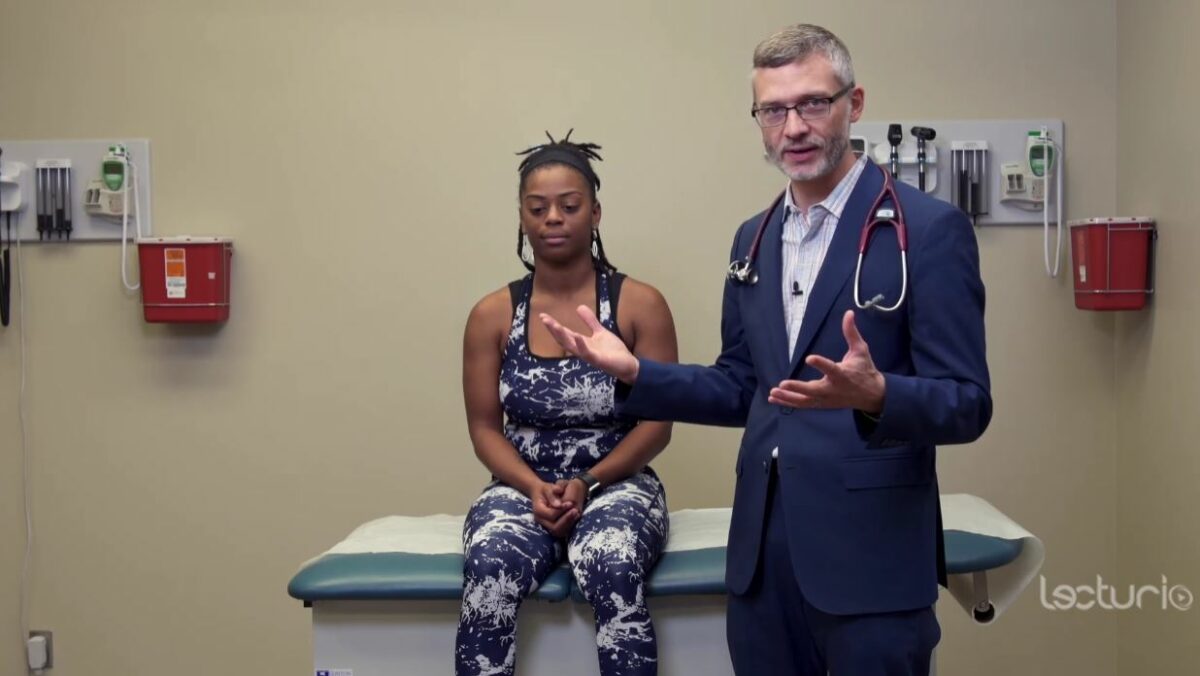What is anamnesis? (definition)
Anamnesis is the process of obtaining a patient’s medical history. It’s one of the most critical aspects of patient assessment and management.
How to take a medical history
Taking a medical history is the first step in every patient examination.
If possible, the physician should ask questions directly to the patient. Exceptions include small children or people who have trouble expressing themselves. Caregivers or family members can also be asked to describe their personal impressions, although the physician needs to ensure that the caregiver or family member is able to accurately describe the patient and their symptoms.
An anamnesis must be taken systematically. It is divided into the following parts:
- Somatic anamnesis: physical examination
- Mental anamnesis: patient’s psyche
- Social anamnesis: environment
- Family anamnesis: dynamic relationship processes
Medical history-taking steps
- Prepare available records and set up a distraction-free space
- Introduce yourself and build rapport
- Ask about chief complaint = reason for the doctor’s visit
- History of present illness (SOCRATES method for symptoms)
- Past medical history
- Take up medications and allergy history
- Ask about the health history of immediate family members and any significant illness
- Explore the patient’s living situation like job and habits (social history)
- Review of systems (ROS): systematically go through the body systems to identify any additional problems or connections
- Closing and thank the patient
Tips and best practices for successful history-taking
Active listening and clarifying
Only a physician who actively listens to their patients will learn what they need to know.
Inquiries should never turn into a sort of interrogation, but always maintain the form of a conversation. The time constraints inherent in any medical practice are a major disruptive factor. On the other hand, a patient with a great desire to talk at length may interfere with daily activities in the practice.
Physician’s should:
- Have an interest in the patient
- Be willing to listen
- Have the ability to listen
- Be completely present
Don’t hesitate to ask clarifying questions or probe further to follow up on information that was not clear enough or glossed over.
Empathy
Empathy is sensitive understanding, not sympathy or compassion. The physician’s goal is to identify with the patient. The physician has a difficult task: to not be judgmental and to make this clear through how they speak to their patients.
Another challenge for physicians is preserving an inner distance from the patients. It takes time and practice to be actively polite, honestly interested, and empathic while not letting the plight of the patient become your own. In addition, a certain degree of control of the conversation is required, so that confidence in the physician’s expertise is maintained. The degree of control necessary depends on the nature of the patient and also on medical history.
By getting to know the patient, an experienced anamnesis is easier and makes it possible to help the patient more quickly and more efficiently.
Paying attention to nonverbal cues can give additional information to what the patient says out loud. Be respectful and aware of cultural differences and adjust your communication style accordingly.
Confidentiality
Reassure the patient about the confidentiality of their information and strictly follow confidentiality rules.
The value of experience in primary care providers
General practitioners who know their patients for many years have a big advantage when taking medical histories, since they know the greater context, background, and development of the patient over time.
This is especially helpful when it comes to unclear symptoms such as insomnia, headaches, recurrent colds, or vague abdominal pain. Thanks to an experienced anamnesis, the general practitioner can eliminate many factors and ask even more precise questions.
What if a patient comes in with their own self-diagnosis?
With the internet readily available with medical advice of very varied quality, a lot of patients inform themselves and gather their own information about their symptoms. When taking the history, it is important not to dismiss them while investigating their symptoms and history without being influenced too much by their idea of the cause.
Patients may fear a specific diagnosis and conceal symptoms once they are aware that the physician suspects that very disease, or, on the other hand, perceive symptoms they expect from the condition they suspect they have, even if they otherwise would not appear.



